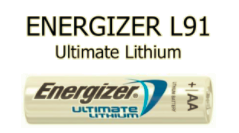Introduction
In order for the weather balloon to properly record data such as temperature, pressure, humidity and GPS location among others, it is necessary to be able to power these systems. While it is generally a simple task once the battery is selected, it is essential to the functionality of the project. Selecting the correct battery for the system is very important as there are many constraints given the environment and the circumstances that the balloon will be under including regulations and the altitude. Most simply put, the power system will power the Arduino Nicla Sense ME which contains all the necessary weather sensors as well as the GPS communication system for the entirety of the flight, depending on how the balloon is filled.
Theory
It is evident that the systems recording and transferring data will be powered by batteries, specifically with brick battery packs of batteries in series. The amount of power needed is determined by the operating current and voltages of the different components. For the Arduino Nicla Sense ME, there is a standalone battery built-in, however, the operating voltages are within the realm of a 3.7V supply from a Li-po, Lithium-ion or Lithium battery connection. For the current communication system, we see that operating voltage for the is within the realm of 3.7V to 5.5V. Now that we understand the general range of operation for each of the systems, it was then time to choose a battery given the other circumstances and design constraints.
Other considerations for batteries included flight, the ability to sustain relatively high current draw, resistance to cold temperatures down to -40 degrees Celsius as well as having the highest energy density possible. Other things that would be positive in the selection of a certain battery would be having short circuit protection in terms of built-in integrated circuits or microstripping. Most importantly, besides having the highest energy density possible, it is important that the batteries are as affordable as possible given the budget constraints.
Implementation
Considering our current situation where we are only powering the communication system with the batteries, Energizer L91 Ultimate Lithium AA Batteries were selected for many reasons satisfying the restrictions and requirements for a successful flight. Firstly, these batteries are extremely resistant to low temperatures as they are operable from -70F to 140F.

Selected Battery Cell
The batteries are very durable and promise a long lifetime due to its leak-proof construction which is also helpful in terms of protecting other components of the payload. Furthermore, the main reason for choosing these batteries specifically is due to the fact that they have the highest possible energy density out of many other batteries that were considered. Lastly, these batteries were quite cheap in terms of their price per cell on top of being relatively lightweight. Important specifications, features and nominal values appear in the table below.
|
Operable Temperature Range |
-70F to 140F |
|
Energy Density |
312 Wh/kg |
|
Price per Cell |
$1.55 per Cell |
|
Weight per Cell |
14.5g per Cell |
|
Nominal Voltage |
1.5V |
|
Nominal Capacity |
3000 mAh |
Battery Specifications/Features
Currently the batteries we are using are perfect for powering our communication system in a battery pack of 3 cells in series. Moving forward we will have to look into powering the Arduino Nicla Sense ME as it will not rely on its standalone built-in power supply . For this, we may need to purchase a different battery as the board has a unique connector for a 3.7V battery which would need to connect to a 3-pin BM03B-ACHSS-GAN-TF connector. This is something we will consider in the future for the launch as the pin is essentially the only thing that is currently needed as the current batteries should suffice with what we are currently doing.
